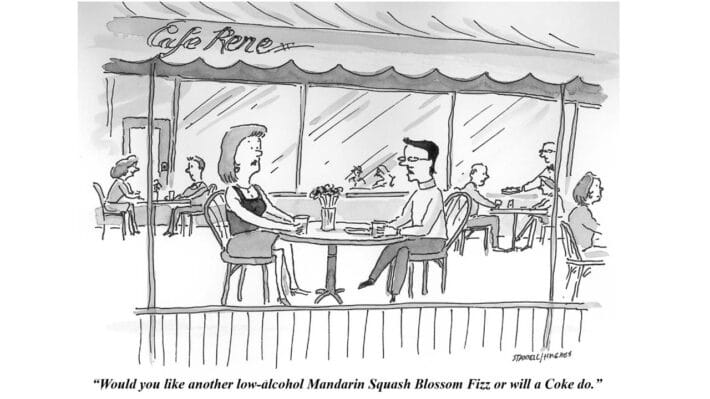Responses to open-ended questions provide leading indicators to the future of work

On August 13th, we held a webinar for 99 participants from the wine industry. We presented findings from two surveys that we conducted overlaid on top of data from three other sources. Included were:
- Our survey of 530 executives about the pandemic’s impact on events, the future of work and consumers.
- Another survey we conducted of 120 American wine importers about the impact of the 25% tariffs that the U.S. has imposed on wines imported from France, Germany, Spain and the UK as well as the pandemic.
- Research conducted by McKinsey, Nielsen and Department of Commerce data covering consumer and business trends, wine imports and the economy.
Our two surveys were conducted over a six-week period from late March to early May. Our data led us to some conclusions about events, big or small, the future of business and consumer trends. Our surveys were conducted well before any of the data that came out from these other esteemed organizations. Yet, we were dead-on with their conclusions such as:
- Massive and rapid overall digital expansion.
- Consumers turning to digital in areas they never considered before.
- Home as the center for both work and life, changing the way we think of our communities and how we collaborate with others.
- A turn toward more support for our local communities including local sourcing so that our far away dependencies diminish.
- Commerce and health combining to establish what is sustainable, safe, reasonable and responsible as the criteria for the commitments we make.
- Greater expectations for the companies and people we do business with to do good while making money.
In fact when you read McKinsey’s predictions (here), we found it startling how similar our projections were and we drew our conclusions twelve weeks earlier. I’m not pointing this out to boast but rather to show proof that asking open-ended questions and analyzing conversational responses is a better and earlier indicator of trends that are going to establish themselves. You see our surveys included more than 1,500 conversational responses from business leaders. Most of them were long-paragraphs and added tremendous data to the traditional closed-ended questions we also asked. They enabled us to project early on how things are changing so fast around us.
Neither consumers nor business people are bits of data. When you ask an open-ended question, they may directly answer the question but they turn it to whatever they want to talk about or is top-of-mind. That way, we gather context and nuance as well as leading indicators. Oomiji takes this further because we append all this information to each respondent’s data file so we can segment them by any criteria including ideas, emotions, motivations and more. It has been referred to as “soft data” but whatever you want to call it, it gives marketers a wholistic profile of their customers and can make their marketing communications much more personal and effective.
On that point, McKinsey agrees and sees the need for more sophisticated ways of acquiring and using data:
“But marketers will need to think through how to manage today’s new wave of data and how to use it to better personalize offers and messages to ever-narrower customer segments. Analytics will need to play a core role not only in tracking consumer preferences and behaviors at increasingly granular levels, but also in enabling rapid response to opportunities or threats.”
In other words, learning how to empathize with your customers interests, needs, emotions and motivations is what’s going to create a high-performing marketing program. Oomiji was built to combine “soft data” with “big data” and thereby provide a 360-degree view of your customers. We believe this is the direction marketing is going and we’re continually seeing reports from well-known organizations bearing this out.
Let’s set up a demo of how the Oomiji platform can work for you.



